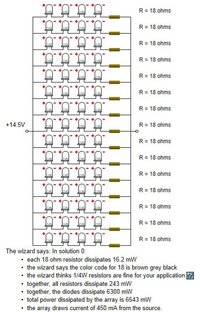- Feb 21, 2012
- 147
I know there is a bunch of posts about LED's, but they seem to get jumbled all together. Feel free to move this if need be.
My question is does this look correct? Its the easiest way for me to soak it all in.
View attachment 19345
Math is my last concern although the calculator said this was correct. Im just looking to understand how to wire these.
My question is does this look correct? Its the easiest way for me to soak it all in.
View attachment 19345
Math is my last concern although the calculator said this was correct. Im just looking to understand how to wire these.



